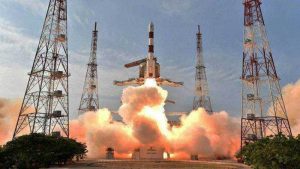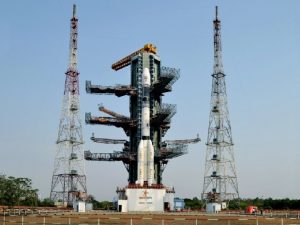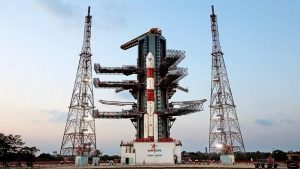India arrangements to dispatch one month from now its most capable rocket that is equipped for transporting a heavier 4-ton correspondences satellite and depicted as a “distinct advantage” in the first of its kind space mission.
Going for a more noteworthy offer of the multi-billion dollar worldwide space showcase and to decrease reliance on global propelling vehicles, the Indian Space Research Organization (ISRO) said today it is wanting to dispatch the Geosynchronous Satellite Launch Vehicle (GSLV) Mark-III in the month of June.
An effective dispatch of this rocket will be yet another significant stride towards acting naturally dependent in the nation’s space program.
The ISRO at present has the capacity to dispatch payloads of up to 2.2 tons into the planned circle and anything over that it needed to tap outside dispatch offices.
“GSLV Mark-III is our next dispatch. We are preparing. Every one of the frameworks are in Sriharikota. The coordination is right now going on,” ISRO Chairman AS Kiran Kumar told columnists here.
“The entire procedure of collecting the different stages and after that incorporating the satellite into the warmth shield, these exercises are going on. To begin with week of June is the point at which we are focusing on this dispatch,” he said.
The ISRO sees operationalisation of this rocket as a “distinct advantage” mission.
GSLV Mark-III will be India’s most effective dispatch vehicle worked to lift the heaviest Indian interchanges satellites to space. It can put satellites measuring 4 tons in space, twofold the weight that the current GSLV-Mark-II can lift.
It will likewise empower ISRO to dispatch from India heavier interchanges shuttle to geostationary circles of 36,000 km. In view of the nonattendance of an intense launcher, ISRO at present dispatches satellites over 2 tons on European rockets for a major expense.
Noticing that correspondences satellites worked past the limit of 2.2 tons must be propelled from remote soil, Kiran Kumar said endeavors are on to dispatch satellites upto four tons and even past in India itself.
The GSLV Mark-III is planned to dispatch satellites into geostationary circle and as a launcher for an Indian team vehicle.
It highlights an Indian cryogenic third stage and a higher payload limit than the current GSLV.
The satellite would convey Ka and Ku-band payload alongside a Geostationary Radiation Spectrometer (GRASP) payload to screen and study the way of the charged particles and impact of space radiation on rocket and electronic segments.
It would likewise utilize advance space craft technoogies incorporating bus subsystem experiments in electrical propulsion system, indigenous Li-ion battery and indigenous bus bars for power distribution, among others.
The innovation on lithium particle batteries created by ISRO is useful for space program as far as cost-viability, yet it requires the endeavors of industry to create it to reduce the costs, Kiran Kumar said.



